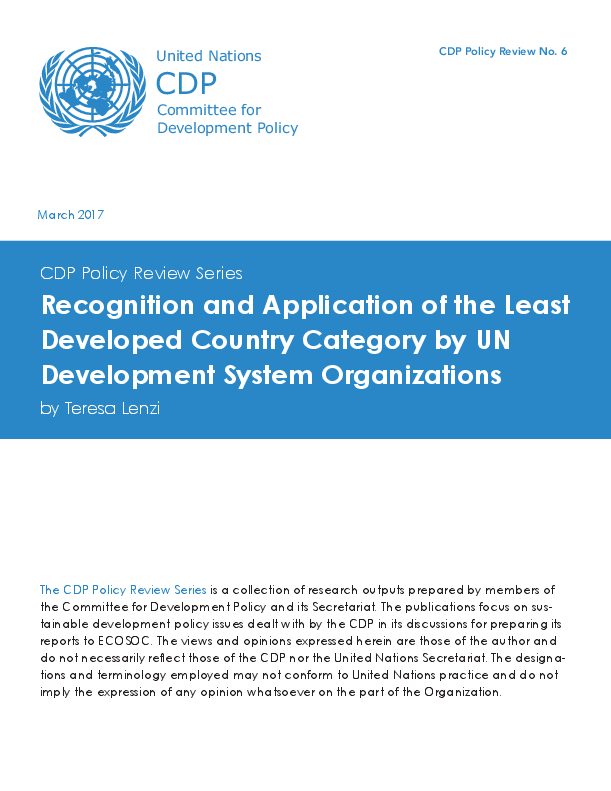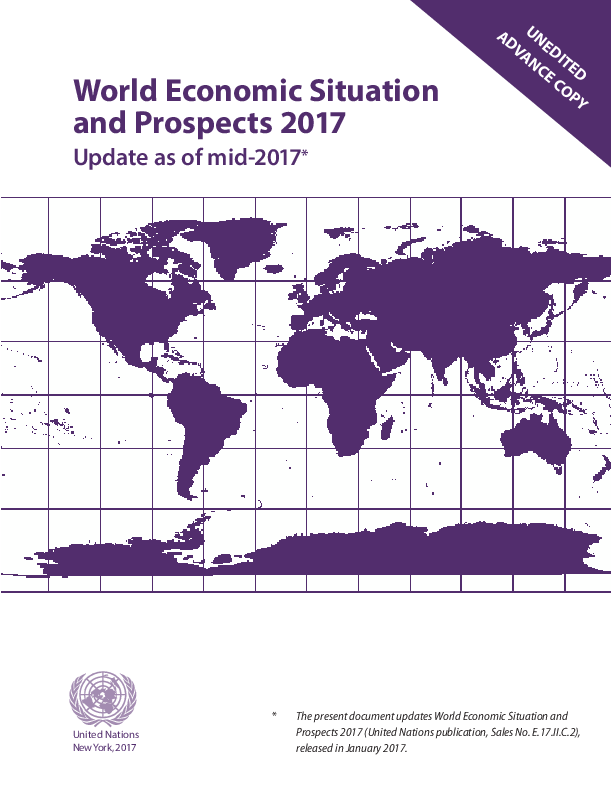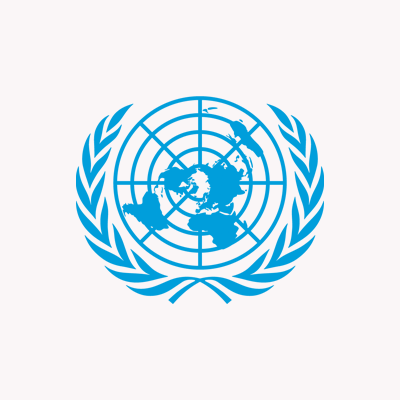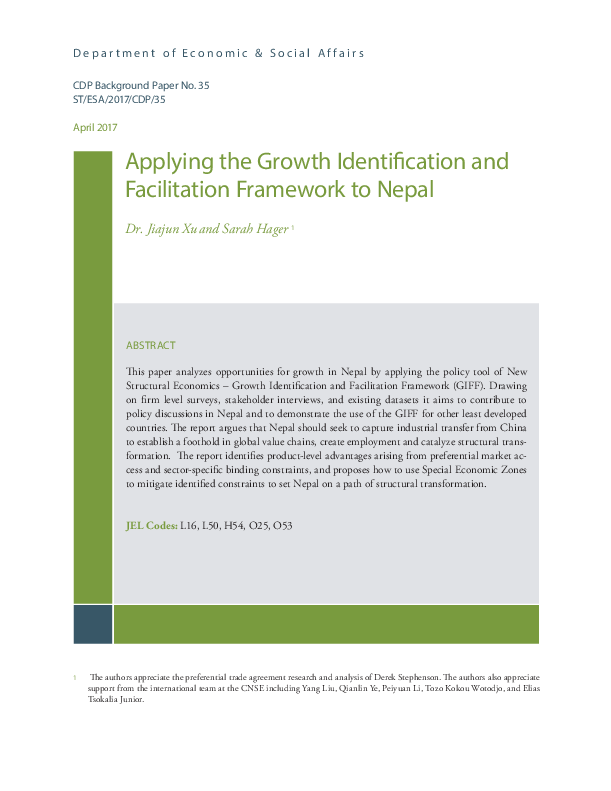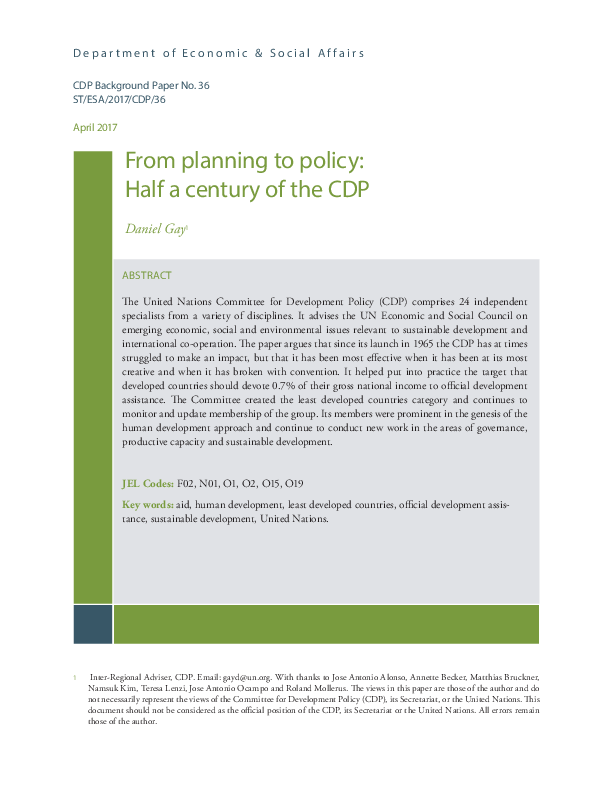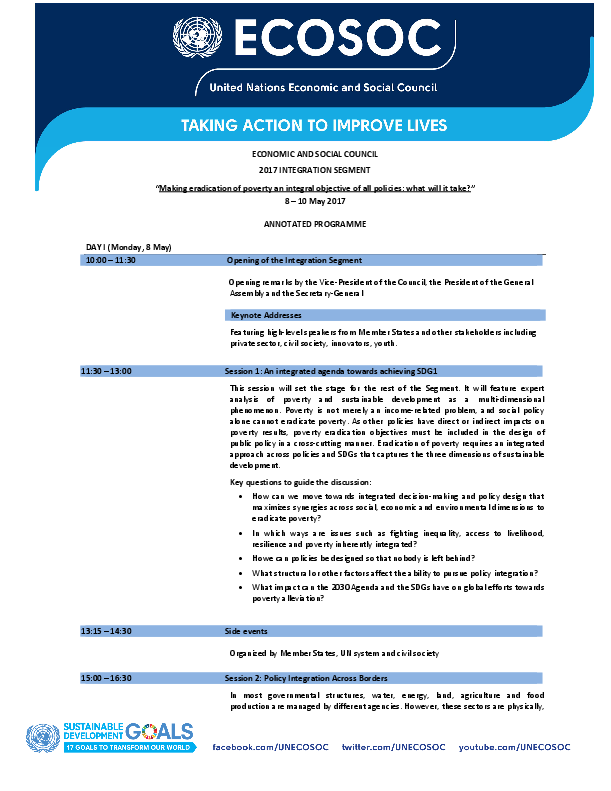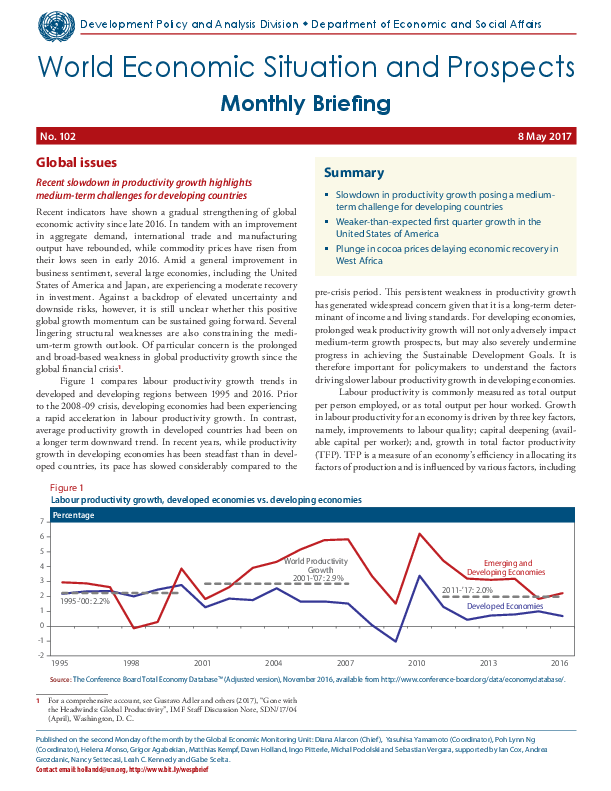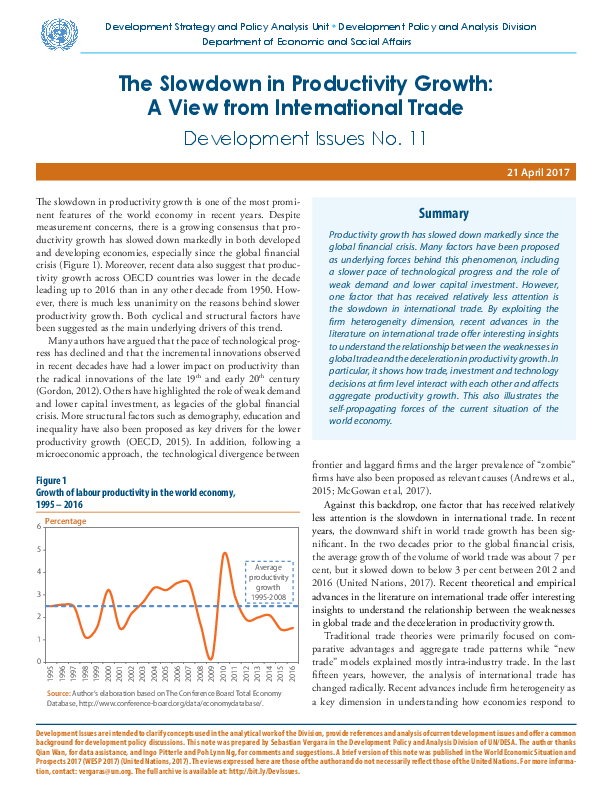Publications
Displaying 421 - 430 of 1105
The CDP?helped put into practice the target that developed countries should devote 0.7% of their gross national income to official development… From planning to policy: Half a century of the CDP
Concept Note CDP Chair is panelist at the 2017 ECOSOC Integration Segment
عربي, 中文, English,?Français, Русский, Español World Economic and Social Survey 2017: Reflecting on seventy years of development policy analysis,?Overview (E/2017/50)
عربي, 中文, English,?Français, Русский, Español World economic situation and prospects as of mid-2017 (E/2017/65)
عربي, 中文, English,?Français, Русский, Español 2017 Reports to the Economic and Social Council
 Welcome to the United Nations
Welcome to the United Nations
